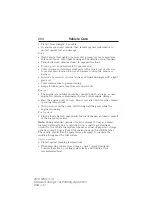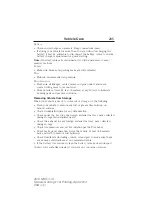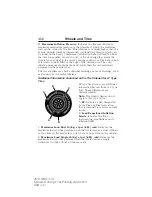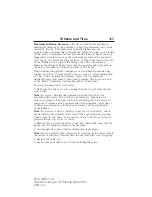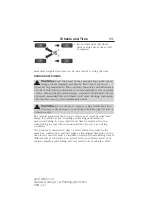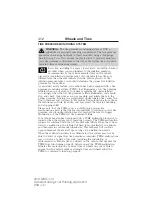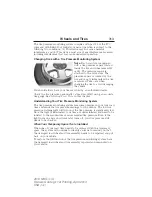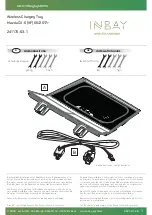
•
Inflation pressure:
A measure of the amount of air in a tire.
•
Standard load:
A class of P-metric or Metric tires designed to carry a
maximum load at 35 psi [37 psi (2.5 bar) for Metric tires]. Increasing
the inflation pressure beyond this pressure will not increase the tire’s
load-carrying capability.
•
Extra load:
A class of P-metric or Metric tires designed to carry a
heavier maximum load at 41 psi [43 psi (2.9 bar) for Metric tires].
Increasing the inflation pressure beyond this pressure will not increase
the tire’s load-carrying capability.
•
kPa:
Kilopascal, a metric unit of air pressure.
•
PSI:
Pounds per square inch, a standard unit of air pressure.
•
Cold tire pressure:
The tire pressure when the vehicle has been
stationary and out of direct sunlight for an hour or more and prior to
the vehicle being driven for 1 mile (1.6 kilometers).
•
Recommended inflation pressure:
The cold inflation pressure found
on the Safety Compliance Certification Label (affixed to either the
door hinge pillar, door-latch post, or the door edge that meets the
door-latch post, next to the driver’s seating position) or Tire Label
located on the B-Pillar or the edge of the driver’s door.
•
B-pillar:
The structural member at the side of the vehicle behind the
front door.
•
Bead area of the tire:
Area of the tire next to the rim.
•
Sidewall of the tire:
Area between the bead area and the tread.
•
Tread area of the tire:
Area of the perimeter of the tire that
contacts the road when mounted on the vehicle.
•
Rim:
The metal support (wheel) for a tire or a tire and tube assembly
upon which the tire beads are seated.
298
Wheels and Tires
2014 MKS
(mks)
Owners Guide gf, 1st Printing, April 2013
USA
(fus)











